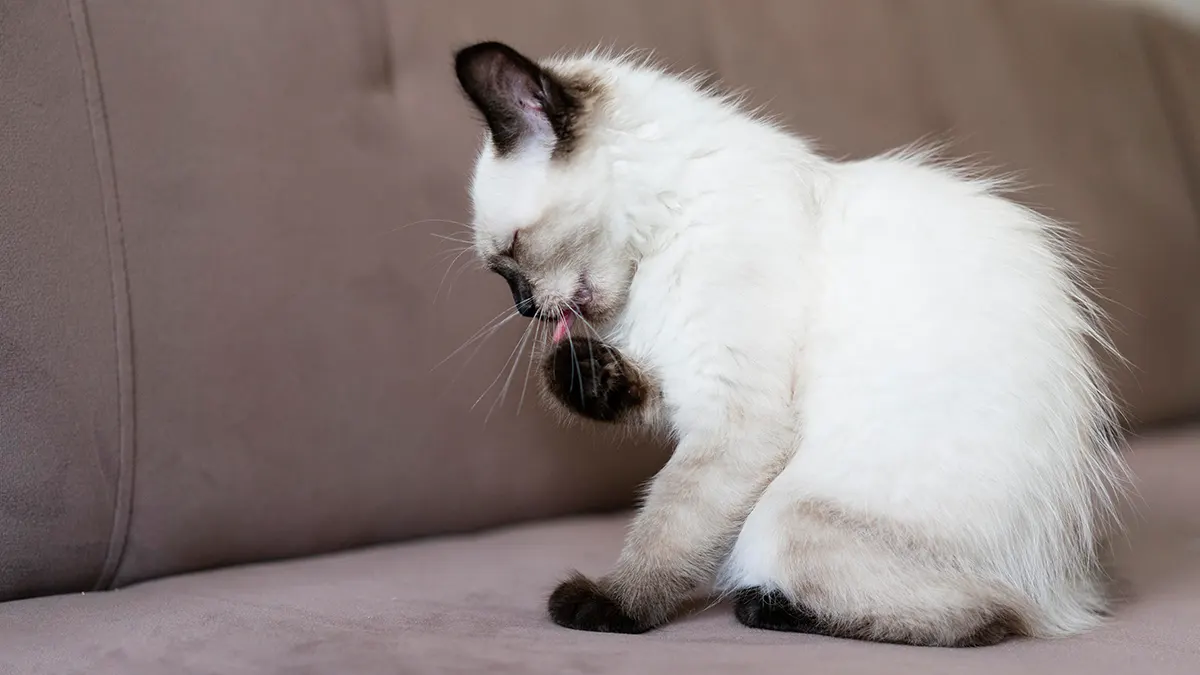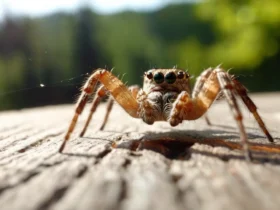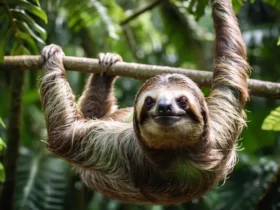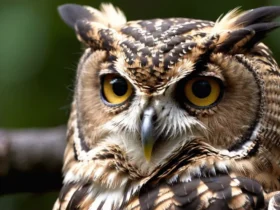Begonias are popular flowering plants found in many gardens. With their colorful blooms and attractive foliage, it’s no wonder begonias are a favorite amongst gardeners. However, these lovely plants can also attract unwanted visitors – animals who want to munch on begonias.
If you’ve noticed bites taken out of your begonia leaves or missing blooms, you may be wondering – what animals eat begonias?
If you’re short on time, here’s a quick answer to your question: Deer, rabbits, groundhogs, voles, squirrels, and some insects like Japanese beetles are the most common animals that eat begonias.
In this comprehensive guide, we’ll cover everything you need to know about what animals eat begonias, from mammals like deer to insects like aphids. You’ll learn how to identify the culprits, why they are attracted to begonias, and effective solutions to protect your begonias from these hungry critters.
Mammals that Feast on Begonias
Deer
Deer can be a big problem for begonia growers, as these foragers find the tasty leaves and flowers hard to resist. White-tailed deer in particular have been known to munch their way through begonia beds and containers, leaving behind a graveyard of gnawed stems and shredded foliage.
Since deer have very few natural predators, their populations often go unchecked in suburban areas. Using fencing, repellents, or planting unappealing companion plants are some ways to try and dissuade Bambi from making a meal out of your begonias.
Rabbits
Like deer, rabbits seem to find begonias particularly delicious. These quick little mammals can devastate an outdoor begonia planting overnight. Their continuously growing teeth lead them to nip off stems and munch leaves and flower buds.
Rabbit-resistant measures like fencing, repellent sprays, and avoidance of planting in areas near woods or brush piles where rabbits live may save your begonias from becoming an all-you-can-eat rabbit buffet.
Groundhogs
Groundhogs, also called woodchucks, are another backyard rodent that creates chaos in gardens, especially veggie plots. If accessible, they will happily sample begonias as well. A groundhog’s hole and tunnel system are often unseen threats that can undermine plant roots.
Their substantial size and meaty diet means groundhogs can ravage a large number of begonias quite quickly. Efforts to restrict their access via fencing and reducing cover around the garden are some ways to curb losses.
Voles
Voles are small mouselike rodents that live largely underground, tunneling through soil and gnawing on roots and bulbs. They typically feed on grasses and root vegetables, but will sample begonias as well.
Their network of tunnels can undermine plants, damage roots, and even allow access to the center of container plantings. Maintaining clean cultivation, eliminating cover around beds, and enclosing the bottoms of containers can help exclude voles.
Squirrels
From scientific name Sciurus, meaning shadow-tailed, tree squirrels get their common name from their bushy tails and their habit of living in trees. These nimble acrobats will readily sample various flowers and vegetables when seed sources or nuts are scarce.
This may include digging up newly planted begonia bulbs or nipping off colorful blooms. Squirrels are less likely to cause widespread damage, but their antics can still frustrate gardeners. exclusionary measures like fencing, tree banding, and repellents may offer the best control.
Insects that Eat Begonias
Japanese Beetles
Japanese beetles (Popillia japonica) are a hugely destructive pest for begonia plants and gardens. The adult beetles attack the begonia’s leaves, flowers, and buds, skeletonizing them by eating all of the plant material between the veins and leaving the veins behind.
This damage can quickly defoliate begonias, destroying their beauty. According to the University of Minnesota Extension, Japanese beetles emerged as a pest in the eastern U.S. in the early 1900s and have steadily spread westward since then.
Begonia growers have a few options to protect their prized plants from Japanese beetles. Removing the adult beetles by hand and dropping them in soapy water is tedious but can reduce damage. Using row covers or netting provides a physical barrier against the beetles.
Applying neem oil or insecticidal soaps when the beetles first appear can deter feeding. As a last resort, commercial insecticides containing ingredients like carbaryl, bifenthrin, or imidacloprid may be necessary to save severely infested begonias.
Aphids
Aphids are tiny, soft-bodied insects that pierce the stems, leaves, and flower buds of begonias with their needle-like mouthparts and suck out the plant’s juices. This eventually causes stunted growth, yellowing leaves, and plant death if left uncontrolled.
Common species attacking begonias are the green peach aphid (Myzus persicae), melon aphid (Aphis gossypii), and cotton aphid (Aphis gossypii). Aphids secrete a sticky substance called honeydew that often turns black with sooty mold fungus.
Since aphids reproduce rapidly, infestations can explode in size before you know it. Gentle spraying of water can remove some aphids. Insecticidal soaps, neem oil, or horticultural oils smother and kill aphids on contact while sparing beneficial insects like ladybugs that feed on them.
As a preventative, apply these sprays once a week. If you see honeydew, it means aphids are actively feeding and it’s time to take action!
Caterpillars
Several moth and butterfly species have caterpillars that crawl onto begonias and munch on their foliage and flowers. These include cabbage loopers (Trichoplusia ni), cutworms (Noctuidae family), armyworms (Spodoptera genus), tomato hornworms (Manduca quinquemaculata), and others.
They chew large, irregular holes in begonia leaves and flowers, sometimes removing entire leaves or stripping plants bare.
Handpicking caterpillars is an organic control option for small infestations. For larger problems, products containing Bacillus thuringiensis (Bt) bacteria safely kill caterpillars while leaving beneficial insects and animals unharmed.
Spinosad is another organic insecticide effective on caterpillars. More potent chemical options include carbaryl, bifenthrin, cyfluthrin and other synthetic pyrethroids as a last resort if Bt fails.
Why These Animals Are Attracted to Begonias
Nutritional Value
Begonias contain compounds like oxalic acid and alkaloids that make them bitter and even toxic to humans in large quantities. However, to some animal species, these compounds give begonias additional nutritional value.
The oxalic acid provides digestive benefits while the alkaloids act as stimulants or micronutrients.
For example, the capybara’s digestive system is able to process oxalic acid for nutritional gain. And for species like deer, the alkaloids in begonias may provide compounds their bodies cannot synthesize on their own.
Lack of Defense Mechanisms
Unlike other garden plants, begonias lack physical and chemical defense systems to ward off pests. Most begonia varieties have no thorns, prickles or toxic oils. And they produce very little lignin or silica, which toughen cell walls. This makes their leaves and stems very palatable and easy to chew.
With their bright flowers and lack of defenses, begonias signal an appetizing free meal. Hungry herbivores take advantage of this vulnerability and frequently snack on their leaves, buds and bark.
Color and Scent
The vibrant colors and sweet scents emitted by begonia blooms also attract foraging animals. Species like squirrels, deer, rabbits, moles and even livestock gravitate towards plants with intense reds, pinks and oranges.
In fact, studies show mammals have better color vision for reddish hues. So a begonia’s crimson blooms really stand out. Their sugary fragrance also signals a food source high in nectar sugars.
How to Prevent Animals from Eating Begonias
Use Physical Barriers
One of the most effective ways to protect begonias from hungry animals is to use physical barriers that block access. Here are some great options:
- Install fencing around your begonia beds. Use chicken wire, hardware cloth, or deer netting to create an impenetrable barrier.
- Place protective wire cages or plastic guards around individual begonia plants.
- Cover beds with floating row covers made from spun polyester or polyethylene fabric.
- Use jugs or cut soda bottles with the bottoms removed as mini greenhouses over young begonia plants.
The key is excluding animals from reaching and eating the begonias. Fencing should be at least 3 feet high for rabbits and woodchucks. Deer may require 8-foot or taller fencing. The barriers need to fully enclose plants, with no gaps where animals can sneak through.
Apply Repellents
There are various taste-based repellents on the market that can deter nuisance animals. Look for animal-safe products labeled for use on edible plants. Some options include:
- Liquid fence sprays made with rotten eggs, hot pepper wax, or bittering agents.
- Granular repellents that spread sulfur or predator urine smells.
- Sachets of garlic, chili pepper, or oil of mustard that can be hung near plants.
Apply repellents according to label directions. Reapply frequently, after rain or watering. Combining repellents with physical barriers creates doubly effective protection.
Grow Unappealing Plants Nearby
Certain plants’ strong scents or prickly textures naturally repel wildlife. Interplanting these around begonias can discourage grazing animals. Examples include:
- Alliums (onions, garlic, chives)
- Marigolds
- Mint
- Oregano
- Thyme
- Lavender
- Prickly rose bushes
- Holly bushes
Group planting fast-growing sacrificial plants, like lettuces and greens, is another tactic. Hungry animals may eat those first, satisfying their appetite before getting to prized begonias.
Use Pesticides as a Last Resort
Chemical pesticides pose risks and should only be considered when other methods fail. Look for animal-safe formulations labeled for the specific pest. Harm squirrels and rabbits with capsaicin-based repellents. Frighten deer with ammonia solutions. Read and follow label directions carefully.
An integrated approach is most effective. Start with physical exclusion, add repellents for extra protection, plant sacrificial varieties, and use pesticides judiciously if needed. With diligence, you can outsmart animals and enjoy lush, unmolested begonias!
Conclusion
Begonias add vibrant color and interest to gardens, but these plants are vulnerable to hungry animal visitors. Deer, rabbits, voles, insects, and other wildlife like to munch on begonias due to their appealing scent, lack of defenses, and nutritional value.
While it can be frustrating to find your lovely begonias damaged, there are solutions. Use physical barriers like fencing, apply natural repellents, grow plants that deter animals nearby, and use targeted pesticides only when necessary.
With some planning and deterrents, you can enjoy gorgeous, thriving begonias without worrying about animals eating them away.








